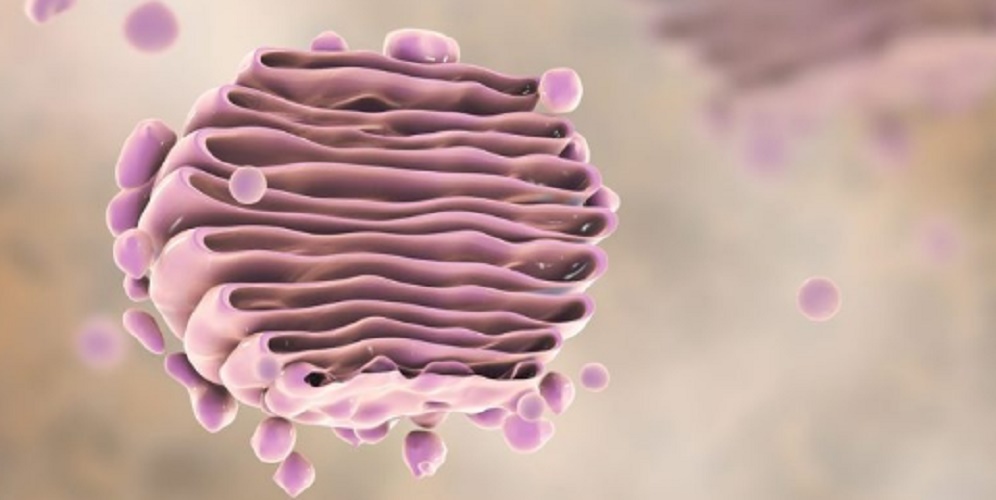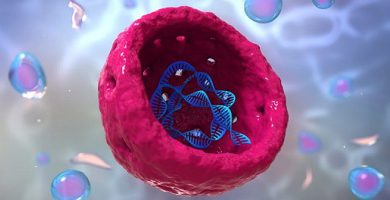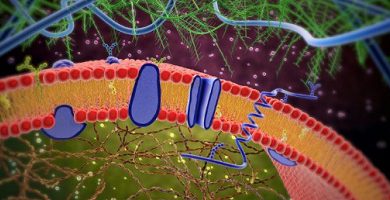What is a plant cell?
We explain what a plant cell is, how they are classified and the parts that compose it. In addition, its functions and what is an animal cell.
-
What is a plant cell?
A plant cell is one that makes up the tissues of plants and other life forms capable of photosynthesis , which are commonly grouped under the term of life plant.
However, the typical morphological characteristics of a plant cell are not universal in all the cells that make up a plant, and are often related to fungal and protist cells, as is the case with the cell wall.
A typical plant cell , however, is perfectly differentiable from an animal , despite being both eukaryotes (they have a defined nucleus ). These differences not only obey morphological criteria, due to the needs of the body of plants, but also to the functions they perform and the type of metabolism with which they obtain energy.
Recall that plant life is photosynthetic, that is, it obtains energy and nutrients from inorganic matter ( water , CO2 ), taking advantage of the sun’s energy; while animals do it by breathing, consuming environmental oxygen and organic matter from other living things.
A first look at plant cells allows us to distinguish those that make up the different types of plant tissue: root, leaves, stems and flowers. Depending on their belonging to the structural tissue or the substance transport tissue, they may be xylem or phloem cells , respectively.
-
Plant cell types
Plant cells are classified into:
- Parenchyma cells . Responsible for the support of the organism, the transport and storage of substances, as well as photosynthesis itself, are the most abundant and specialized of the plant organism.
- Colenchyme cells . Equipped with only one primary wall, they appear during maturity and are typically elongated, giving traction, flexibility and resistance to tissues. That is, they are plastic support cells.
- Scleenchyme cells . Hard, rigid cells, whose secondary walls have lignin, becoming impermeable. In the maturity of the plant they are usually already dead, without cytoplasm , leaving only an empty central cavity. His main role is defensive.
-
Parts and functions of a plant cell

A typical plant cell is composed of:
- Cell wall . Plant cells have a rigid cellulose structure covering them in two different walls: primary and secondary, which prevents growth as such of the cell and forces it to thicken by depositing cellulose microfibers.
- Cytoplasm . Like all cells, it is the inside of it, a suspension of internal substances where cellular organelles are found and composed of hialoplasma or cytosol.
- Plasmodesma . Cytoplasm units that can cross the cell wall and connect the plant cells of the same organism, allowing communication between cell cytoplasms and communicating them through a cylindrical duct called a demotubule.
- Vacuole . Present in all plant cells, these are closed compartments of the plasma membrane that contain fluids such as water or enzymes, including sugars, salts or proteins. Without a definite form, they are used as nutrient deposits for the cell.
- Plastids . These are organelles that allow the storage in the cell of essential substances for primary processes, such as photosynthesis, amino acid or lipid synthesis , and determine the color of fruits and flowers, for example. They can be chloroplasts (store chlorophyll), leucoplasts (allow the conversion of glucose into more complex sugars) or chromoplasts (store carotenes, a type of pigment).
- Golgi apparatus . It is a set of 80 dichthomasomes in the cell, that is, a set of flattened and membrane-surrounded saccules, which fulfill the function of manufacturing many of the necessary proteins .
- Ribosomes . Macromolecular protein and RNA complexes, located in the cytoplasm, in the mitochondria and in the endoplasmic reticulum, even in the chloroplasts, and are the main source of protein synthesis, based on the information of the DNA that arrives to them via mRNA (messenger) ).
- Reticulum endoplasmic . A complex system of cell membranes that covers the entire cellular cytoplasm of eukaryotes, in the form of flattened and interconnected sacs, which are divided into two: the rough and smooth body, responsible for functions as diverse as the metabolism of lipids, the detoxification or protein synthesis.
- Mitochondria . Large organelles that are responsible for generating cell energy (synthesis of ATP ).
- Plasma membrane . Like all cells, they have a membrane that distinguishes the outside from inside the cell and allows them to maintain their internal pressure and pH margins .
- Cell nucleus . Like all eukaryotic cells, plant cells have a well-defined cell nucleus, where DNA is housed, and that performs specific functions during cell replication.
-
Animal cell
Animal cells, unlike plants, do not have a cell wall , which makes them more flexible, nor plasmodesmos, nor a central vacuole (with tonoplasts), or any type of plastids, since it does not do photosynthesis, but breathing .
The internal structures of the animal cell respond to the metabolism of glucose oxidation , and often, in the case of unicellular beings, they are provided with cilia and flagella to move, something that plant cells do not.





